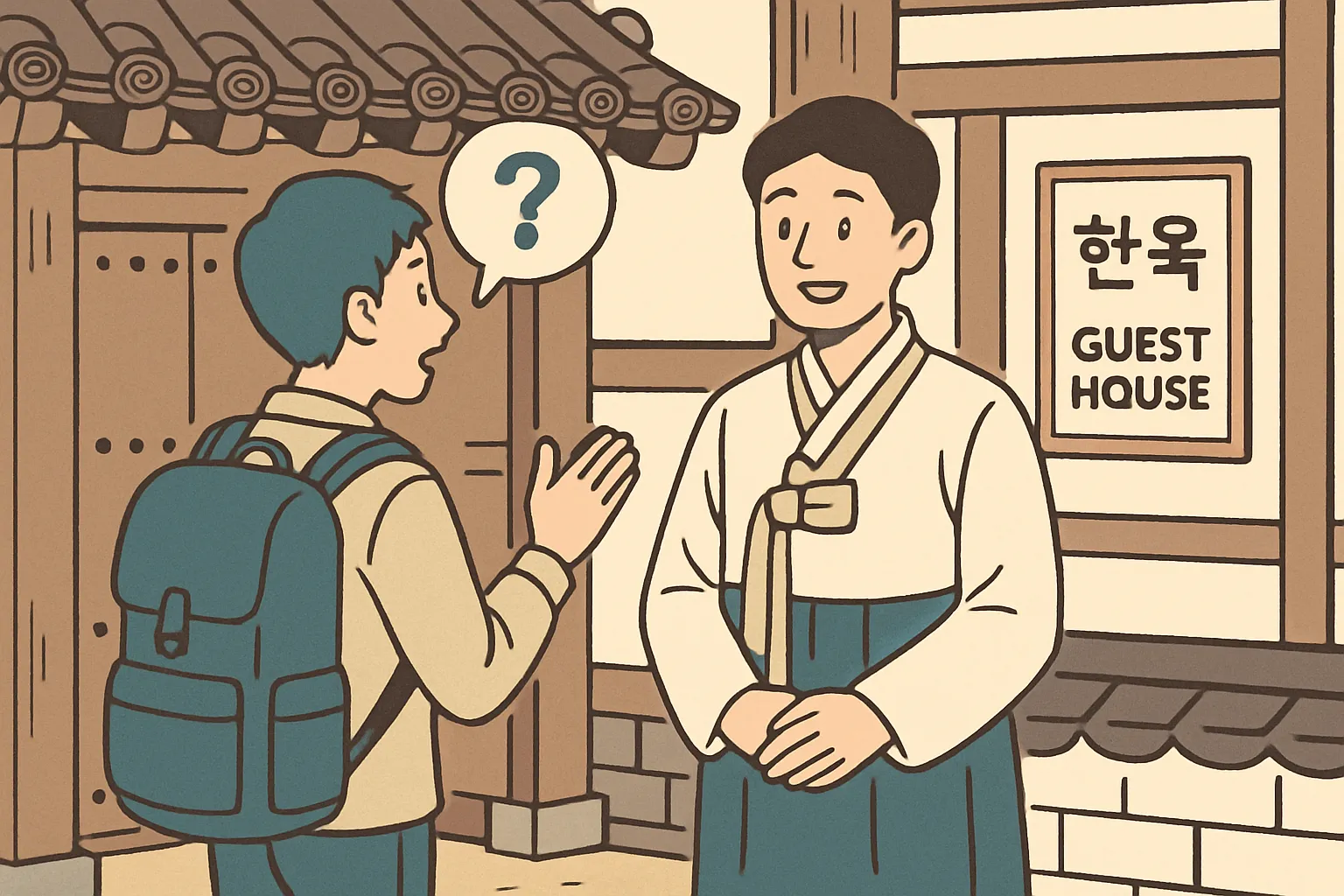Wear All Six Hats: Solve Problems Like a Korean Startup Pro!
Hello! It’s your favorite Korean booster, [매일한글] (Maeil Hangeul), here to upgrade your language skills!
Ever been in a meeting where everyone talks over each other, and no real solution is found? Or maybe you’re brainstorming an idea but can’t seem to look at it from all angles? Today, we’re going to learn a powerful technique to solve these problems: the ‘Six Thinking Hats’ (여섯 색깔 생각 모자) method, along with the Korean phrases to master it.
Lately in Korea, there’s a huge buzz around the innovative and fast-paced culture of startups, just like what you see in popular K-dramas like ‘Start-Up’ (스타트업)! This problem-solving method is exactly what they use to turn brilliant ideas into reality. Ready to think like a K-drama CEO? Let’s go!
Core Expressions: Your Thinking Toolkit
Here are five essential phrases that represent five of the “Thinking Hats,” helping you express different viewpoints clearly in any discussion.
1. The White Hat (Facts & Data) 🤍
- Korean Expression: 객관적으로 봤을 때 (goek-gwan-jeo-geu-ro bwas-seul ttae)
- English Meaning: Objectively speaking / Looking at it objectively
- Detailed Explanation: This phrase is your go-to when you want to present pure facts and data, without any personal feelings or opinions. It signals that you are focusing only on the information available. It’s perfect for starting a discussion on a neutral ground in a business meeting or a serious debate.
2. The Red Hat (Feelings & Intuition) ❤️
- Korean Expression: 제 직감으로는 (je jik-gam-eu-ro-neun)
- English Meaning: My gut feeling is… / My intuition tells me…
- Detailed Explanation: This is for sharing your hunches, feelings, and intuition without needing to justify them with logic. In Korean culture, where harmony is important, clearly stating that this is just a “feeling” (
직감) allows you to share a personal take without it sounding like a hard fact or criticism.
3. The Black Hat (Cautions & Risks) 🖤
- Korean Expression: 가장 우려되는 점은 (ga-jang u-ryeo-doe-neun jeom-eun)
- English Meaning: The most concerning point is… / What worries me most is…
- Detailed Explanation: This is the phrase for playing devil’s advocate. It’s used to point out potential risks, weaknesses, or problems in a plan. Using
우려되다(to be concerned) makes your point sound thoughtful and constructive, rather than just negative. It shows you are carefully considering the downsides.
4. The Yellow Hat (Benefits & Positivity) 💛
- Korean Expression: 긍정적인 측면을 보자면 (geung-jeong-jeo-gin cheuk-myeon-eul bo-ja-myeon)
- English Meaning: Looking at the positive side… / On the bright side…
- Detailed Explanation: This is the optimistic hat! Use this phrase to highlight the benefits and advantages of an idea. It’s the perfect way to counterbalance the Black Hat’s concerns and keep the discussion hopeful and forward-moving.
측면(side, aspect) is a great word to know for discussions.
5. The Green Hat (Creativity & New Ideas) 💚
- Korean Expression: 새로운 관점에서 접근해 보면 어떨까요? (sae-ro-un gwan-jeom-e-seo jeop-geun-hae bo-myeon eo-tteol-kka-yo?)
- English Meaning: How about we approach this from a new perspective?
- Detailed Explanation: This is the phrase for creativity! When the discussion is stuck, use this question to encourage brainstorming and out-of-the-box thinking. It’s a polite and collaborative way to suggest that the team tries a completely different angle.
Example Dialogue: A Startup Meeting
Let’s see how these hats work in a team meeting discussing a new menu item for their café.
- A (Team Leader): 우리 카페의 다음 분기 신메뉴로 ‘민트초코 떡볶이’를 출시하는 것에 대해 논의해 봅시다.
(Let’s discuss launching ‘Mint-Chocolate Tteokbokki’ as our café’s new menu item for the next quarter.) -
B (Team Member): 음… 객관적으로 봤을 때, 최근 데이터상으로 민트초코에 대한 호불호가 극명하게 갈립니다.
(Hmm… Objectively speaking, recent data shows that people’s preferences for mint chocolate are extremely divided.) -
A (Team Leader): 맞아요. 하지만 제 직감으로는, 이 독특함이 오히려 SNS에서 큰 화제가 될 것 같아요.
(That’s right. But my gut feeling is that this uniqueness will actually become a hot topic on social media.) -
B (Team Member): 가장 우려되는 점은 부정적인 반응이 너무 많으면 카페 전체 이미지에 타격을 줄 수 있다는 점입니다.
(The most concerning point is that if there are too many negative reactions, it could damage our café’s entire brand image.) -
A (Team Leader): 좋은 지적이에요. 그럼 긍정적인 측면을 보자면, 성공할 경우 ‘혁신적인 카페’라는 이미지를 얻을 수 있겠죠. 새로운 관점에서 접근해 보면 어떨까요? ‘도전! 민초 떡볶이’ 챌린지 같은 마케팅을 함께 진행하는 거죠.
(Good point. Then, looking at the positive side, if it succeeds, we could gain an image as an ‘innovative café’. How about we approach this from a new perspective? We could run it with a marketing campaign like a ‘Challenge! Mint-Choco Tteokbokki’ event.)
Culture Tip & Trend Deep Dive
In many Korean workplaces, there’s an unspoken concept called 눈치 (Nunchi), which is the subtle art of sensing the mood and thoughts of others. While 눈치 is important, it can sometimes lead to misunderstandings because people might not state their opinions directly.
The ‘Six Thinking Hats’ technique is becoming popular in modern Korean companies precisely because it solves this problem! It gives everyone clear permission to speak from a certain viewpoint.
- You’re not being negative, you’re “wearing the Black Hat.”
- You’re not being illogical, you’re “wearing the Red Hat.”
Using these phrases shows that you not only speak Korean but also understand modern, collaborative work culture. In K-dramas set in offices, you’ll often see characters struggling because they can’t express their true concerns (Black Hat) or creative ideas (Green Hat). By using these expressions, you can be the effective team player who helps everyone communicate better!
Let’s Wrap It Up & Practice!
Today, we learned how to analyze problems from multiple angles using the ‘Six Thinking Hats’ method and five key Korean phrases. Now you can express facts, feelings, concerns, hopes, and creative ideas like a pro!
Quick Quiz:
Your team suggests developing a new mobile app, but you think the development cost is too high. Which phrase would you use to express this concern?
- 빈칸 채우기 (Fill in the blank):
“좋은 아이디어지만, ________ 개발 비용이 너무 많이 든다는 점입니다.”
(It’s a good idea, but ________ the development cost is too high.)
Think you know the answer? (Hint: It’s the hat for caution!)
Share your answer or try making your own sentence with one of today’s expressions in the comments below. We’d love to see what you come up with






